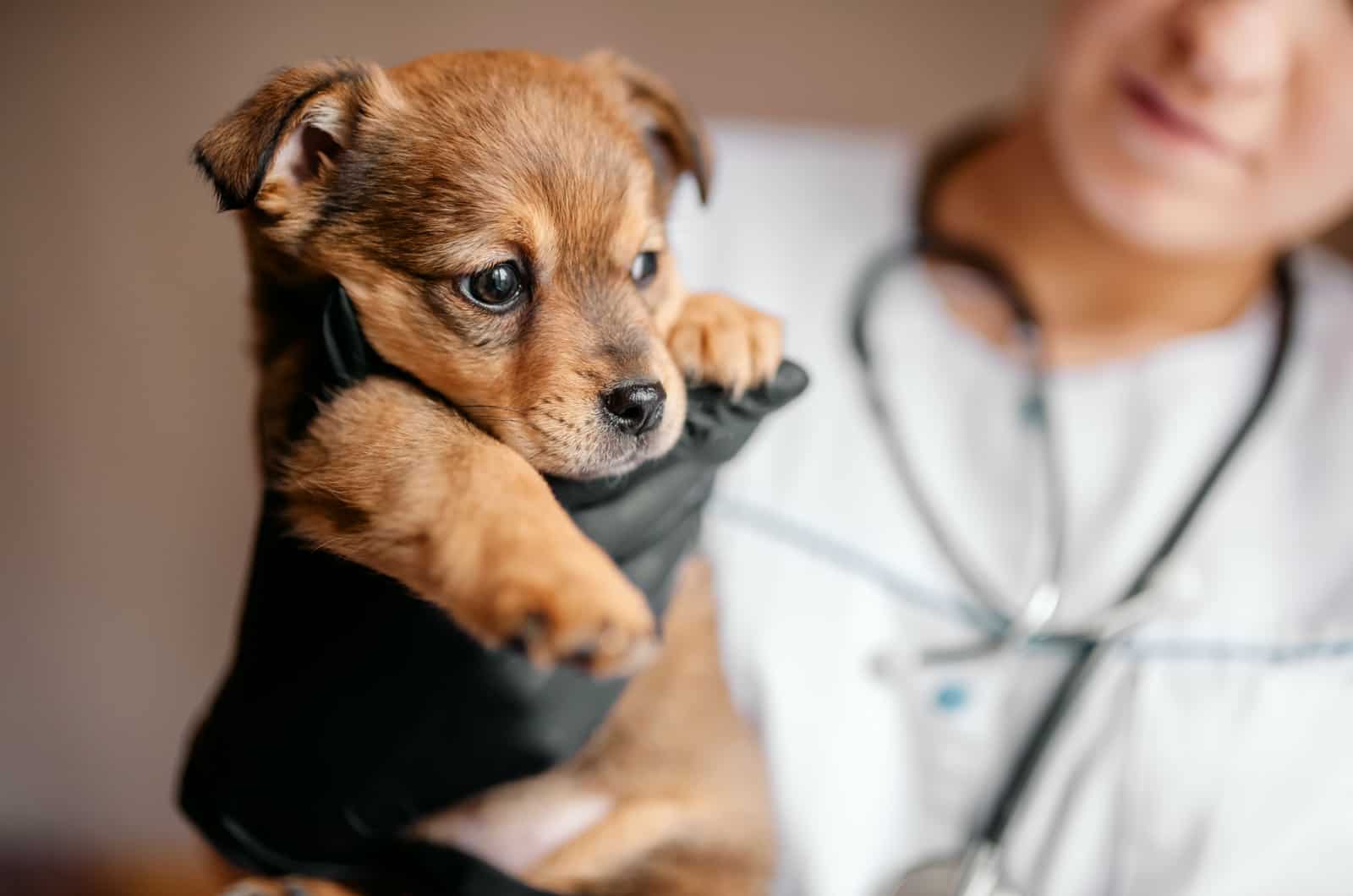Having a dog is a beautiful thing. Creating lifelong memories with your furry best friend is something special, and people that do not have dogs cannot understand it. But as with everything beautiful, there are some moments that are stressful.
The most common and overwhelming thing about owning a dog is sickness. A lot of things can be prevented, but some things can happen even when you are doing your best, so do not stress about it a lot.
One of the health problems that your dog can face is parvo. This is more common with puppies, but this illness can hit even older dogs, especially ones that are not vaccinated.
“How do I know if my puppy will survive parvo?” is one of the main questions that comes along with this illness.
In this article, we will go through everything you need to know about this disease, how to help your dog, and how to know if your dog is getting better. There is a lot to go through, so buckle up and let us start.
What Is Parvo?
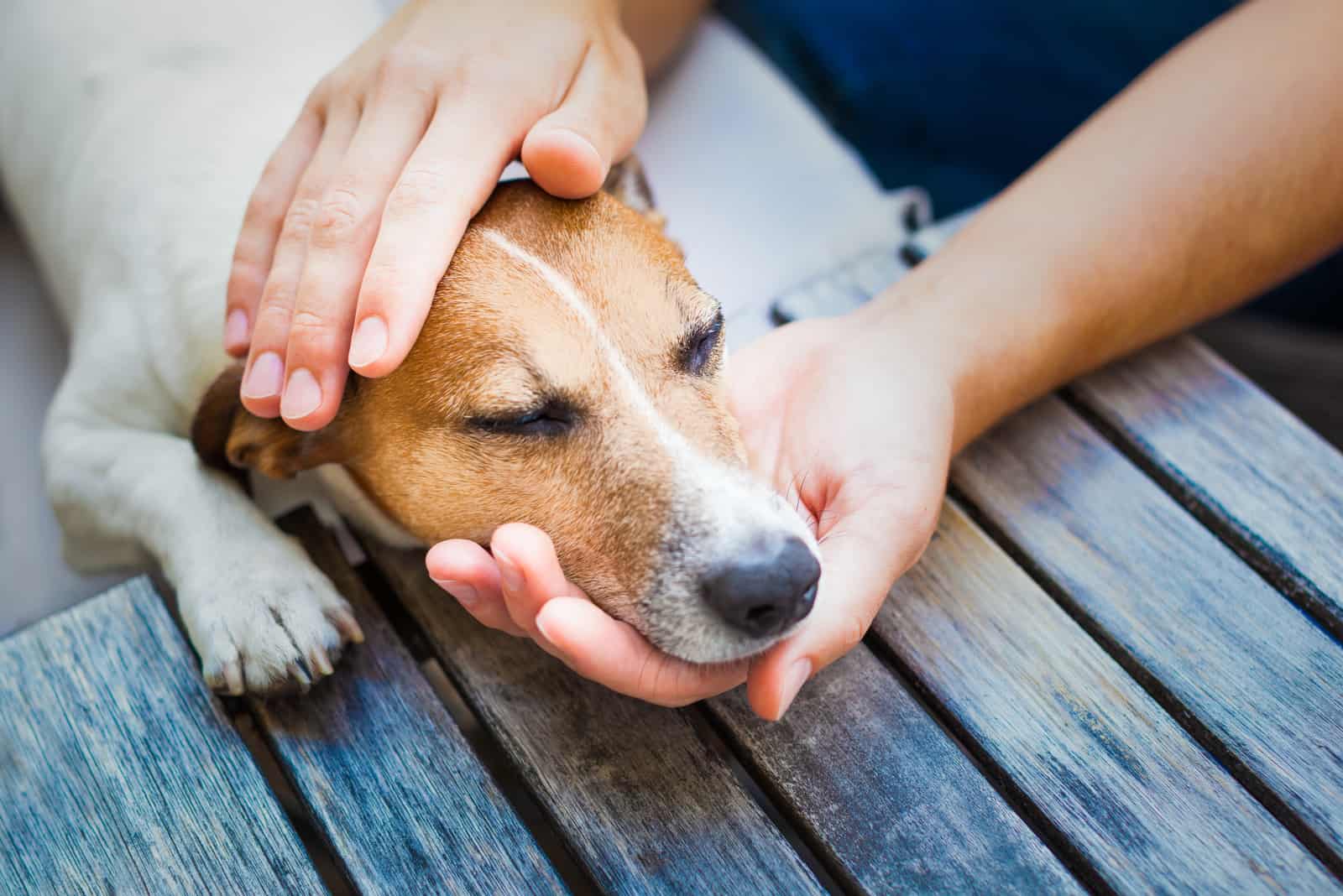
Parvovirus is a deadly and highly contagious DNA virus that can cause infections and many problems for your puppy or even adult. The first time this virus appeared in the United States was in 1978.
In 1981, the first parvovirus vaccine was developed. Unfortunately, since this virus is highly contagious, a lot of furry friends died before the vaccine was developed. This virus is still very deadly and contagious today, so we as dog owners need to be careful and take precautions.
Bone marrow and the intestinal tract are the main targets of this virus. You need to know that sometimes a puppy that’s contracted parvovirus may die no matter what you do. But we encourage you to do whatever is in your power to help your pooch.
If you do nothing, your puppy will definitely not get better. You will need to be present for your doggie for 24 hours. This illness is exhausting for the pooch, but it is also draining, both emotionally and physically, for dog owners. Still, the pups have it worse.
Puppies are most likely to get parvo from six to 20 weeks of age.
Something interesting is that the mother dog’s milk is very nutritious and full of natural antibodies that protect puppies from many health issues, including parvo. When the puppy is switched from mother’s milk to puppy dog food, part of that naturally built-in protection of the immune system will be gone.
When you vaccinate your dog for parvo, a new protection will enter your pooch’s body to replace the natural protection of mother’s milk.
Puppies cannot take the vaccine well until they turn six weeks old. Until then, you need to ensure that their immune system is strong after they stop nursing. And you can do that by giving the puppy cooked or raw whole foods.
You will need to set aside a lot of time, money, and patience for your puppy to get better.
Even though puppies are the main victims of this illness, older and senior dogs that are not vaccinated can get it as well.
7 Stages Of Parvo
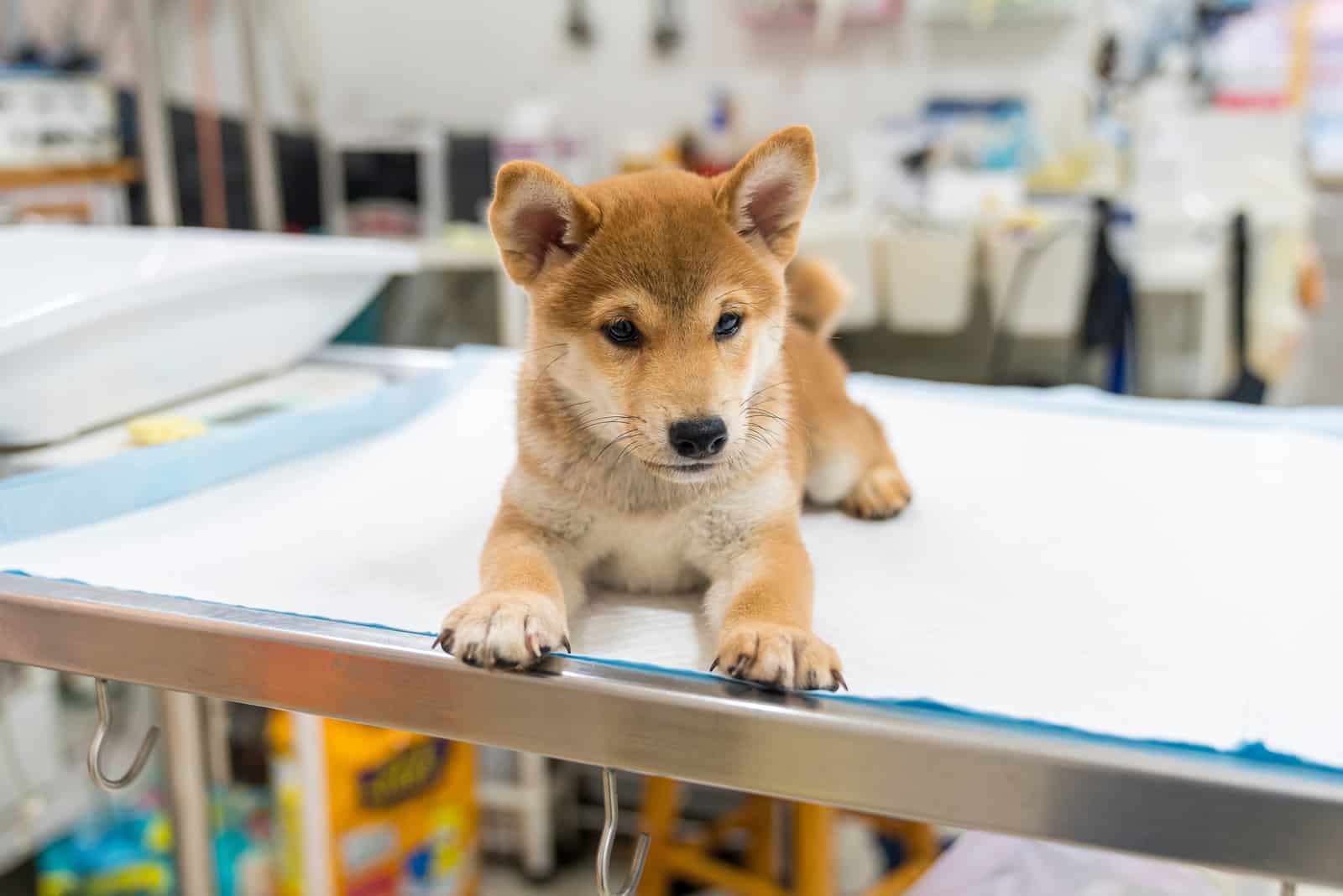
If your puppy or unvaccinated dog has caught this terrible disease, you need to know that there are some stages that naturally develop over time. Unfortunately, the most crucial stages are the ones that are hardest to catch because there are no symptoms until it is either too late or close to being too late.
Before listing and describing the stages, you need to know that regardless of what you do, your pooch may not survive this disease. Survival mostly depends on how many antibodies your pooch has.
Some dogs are more protected because they nursed for the necessary amount of time and their mother’s milk was packed with natural antibodies. Other puppies do not have that kind of luck, and they will for sure have a harder time and may potentially die.
Here are the stages of parvo:
Stage 1: Exposure to parvo
Stage 2: Incubation (3-5 days after initial contact)
Stage 3: Appearance of symptoms (5-8 days after initial contact)
Stage 4: Diagnosis
Stage 5: Treatment
Stage 6: Recovery (14-20 days)
Stage 7: Full recovery and re-testing (30-40 days after initial contact)
We will describe every one of these stages in more detail later in the article.
Stage 1: Exposure To Parvo
There is nothing that can cause this disease but the virus itself. For a dog to get infected, they need to be exposed to this virus. Dogs that are exposed and do not have proper immunity will for sure get infected.
Puppies and dogs that have the immunity either by vaccination or their natural immune system can be exposed to the virus without getting infected.
You may want to know how dogs are exposed to the virus. Parvovirus is a type of virus that can survive both cold and warm temperatures.
During colder months such as the winter, this virus may not be that strong, but when the weather gets warmer, it regains its full effectiveness.
A dog can be exposed by simply licking or sniffing the floor or something on the ground. Since this virus thrives in warmer weather, spring is the most common time for dogs to get infected.
They can also get infected if they smell the anus of another dog or come into contact with saliva or vomit from an infected dog.
Another way for your dog to contract parvo is if you step on dog poop or pee, come home, and leave the shoe unattended. Your dog will most likely sniff or even lick the feces.
What happens after the dog gets exposed? Well, this depends on their immune system. Dogs can have a built-in immune system, which means that they may already have had the virus and recovered fully.
If your dog has a strong immune system, they will not contract it and will not go through the other stages of the virus even when they are exposed to the virus either by sniffing or licking something contaminated.
Dogs that do not have the necessary immunity against the parvovirus will move on to other stages of parvo and will need a lot of help to get better.
RELATED: Why Does My Dog Lick Other Dogs’ Pee? Causes And Explanations
Stage 2: Incubation
This is the period from the first contact with the virus until the first symptom or symptoms appear. For most dogs, this period is anywhere from three to five days.
If you find out that there was a parvo outbreak somewhere around you and your dog, you should act immediately. Being notified would be the lucky part in an unlucky situation.
However, sometimes you will not know if your dog has been in contact because you cannot detect a contaminated thing that they have sniffed or licked. You will not even be able to know if another dog was in the incubation stage when your dog was playing with them.
When the first sign appears, you will need to act as quickly as possible to give your dog a better chance at survival.
Stage 3: Appearance Of Symptoms
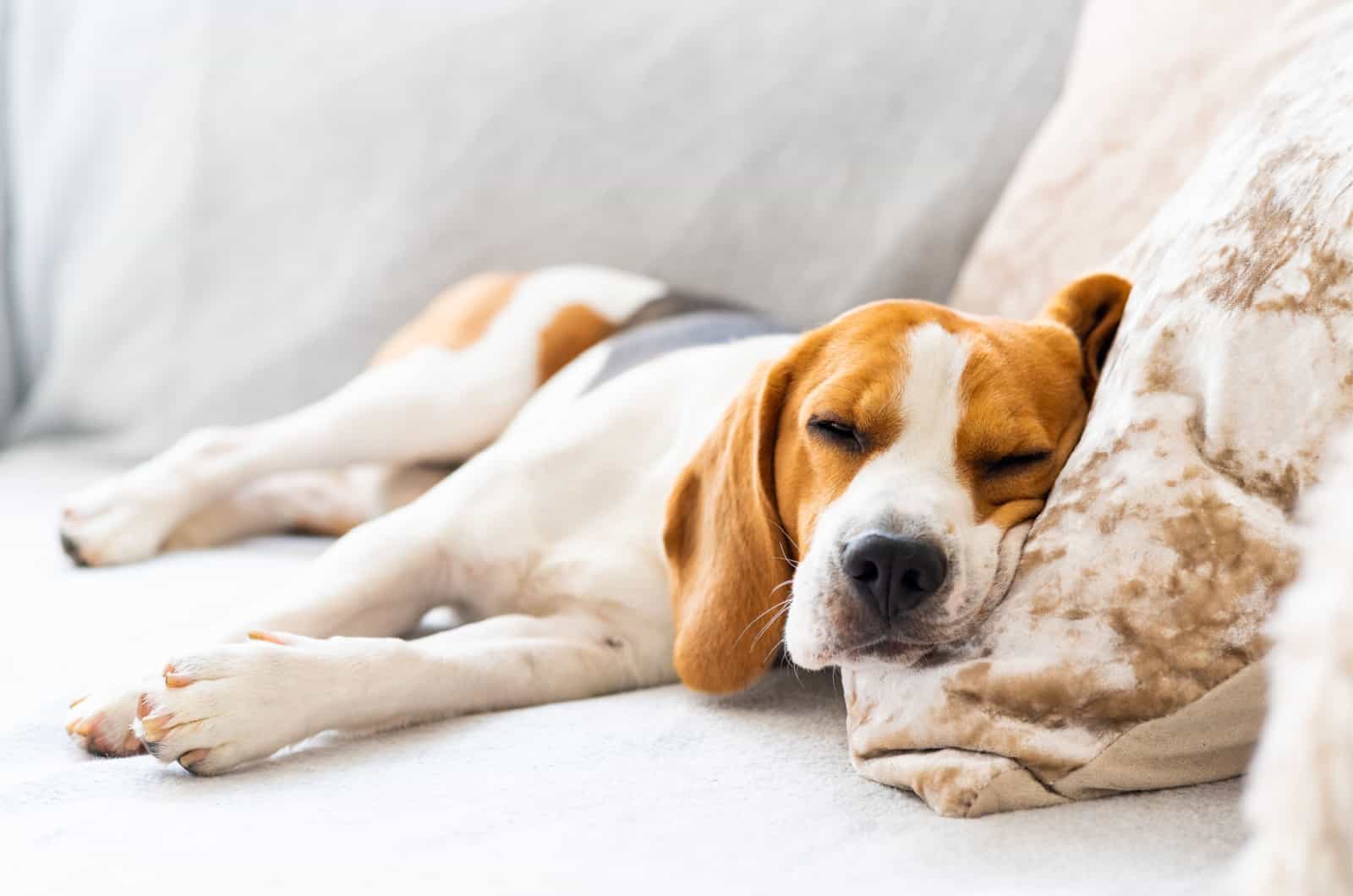
When it comes to owning a dog, one of the most important things that you can do is monitor your pooch, especially when they are a puppy. If you are doing this frequently, you will be able to prevent some potentially very scary situations, like your dog getting infected with the parvovirus.
For example, if you have a dog that has high or medium energy levels and they suddenly start behaving a bit lazier and look kind of weak, you will know that you need to take action.
Noticing changes in your dog’s behavior can sometimes save their life. This is one of the earliest signs that may be hard to detect, especially if you haven’t had the puppy with you for a long time and you do not yet know them that well.
But for you to notice some of the symptoms, you should know more about them. Don’t worry; we are here to help you out.
Symptoms Of Parvo
Every sickness has its symptoms. Some are more common, while others are not. Many health problems that are connected to dogs can have quite the similar symptoms, so it can get confusing at times.
The most important thing after noticing a symptom is reacting. You do not need to detect what potential problem is, you just need to take your dog to the vet as soon as possible.
This is the case with parvo as well. There are some symptoms of parvo that can be connected to other less dangerous health problems. If your dog starts to vomit, you may think that it’s food poisoning, so you try to cure it yourself, especially if you have some experience with that.
But in fact, it may be parvo. This is why we advise every dog owner to take their dog to the vet for even the smallest changes that you notice in your dog.
Here are some of the signs of parvo that you need to know about:
– Fever: Since this is an infection, the dog is likely to get a high fever.
– Lethargy: This is likely the first sign that you will be able to notice with your dog. The dog will appear weak and will not have the energy to play or go for walks.
– Depression: This is connected with lethargy and can be one of the first symptoms. This may not be that noticeable and can be confused with your dog being tired.
– Anorexia: This is another word for loss of appetite in dogs. This can be considered a secondary sign. They will gradually start to refuse food until they stop eating at all.
– Weight loss: This is connected to their lack of appetite. You will be able to notice your dog losing weight. The speed at which the dog loses weight depends on a couple of factors, but it can happen quite quickly.
– Bloody diarrhea: Your pooch will have the urge to defecate very often. The feces will be watery and in most cases will contain blood because their gastrointestinal tract is being attacked.
– Vomiting: Your dog will be vomiting frequently. The vomit will either be clear, yellow, or brown. You will even be able to notice drooling and some foam around your dog’s mouth because of the frequent vomiting.
– Severe dehydration: This is a result of vomiting and diarrhea. The dog will be losing a lot of water which is a problem by itself, let alone when they are too weak and do not feel like drinking enough water. This can cause a severe electrolyte imbalance.
– Pain or discomfort
– Low body temperature
– Red inflamed tissue around the eyes and mouth
– Rapid heartbeat
– Sepsis
– Bloating
Unfortunately, these symptoms develop quickly. Your dog may not have all of them, but many of these can appear.
RELATED: 15 Signs A Dog Is Dying: When Should You Say Goodbye?
Stage 4: Diagnosis
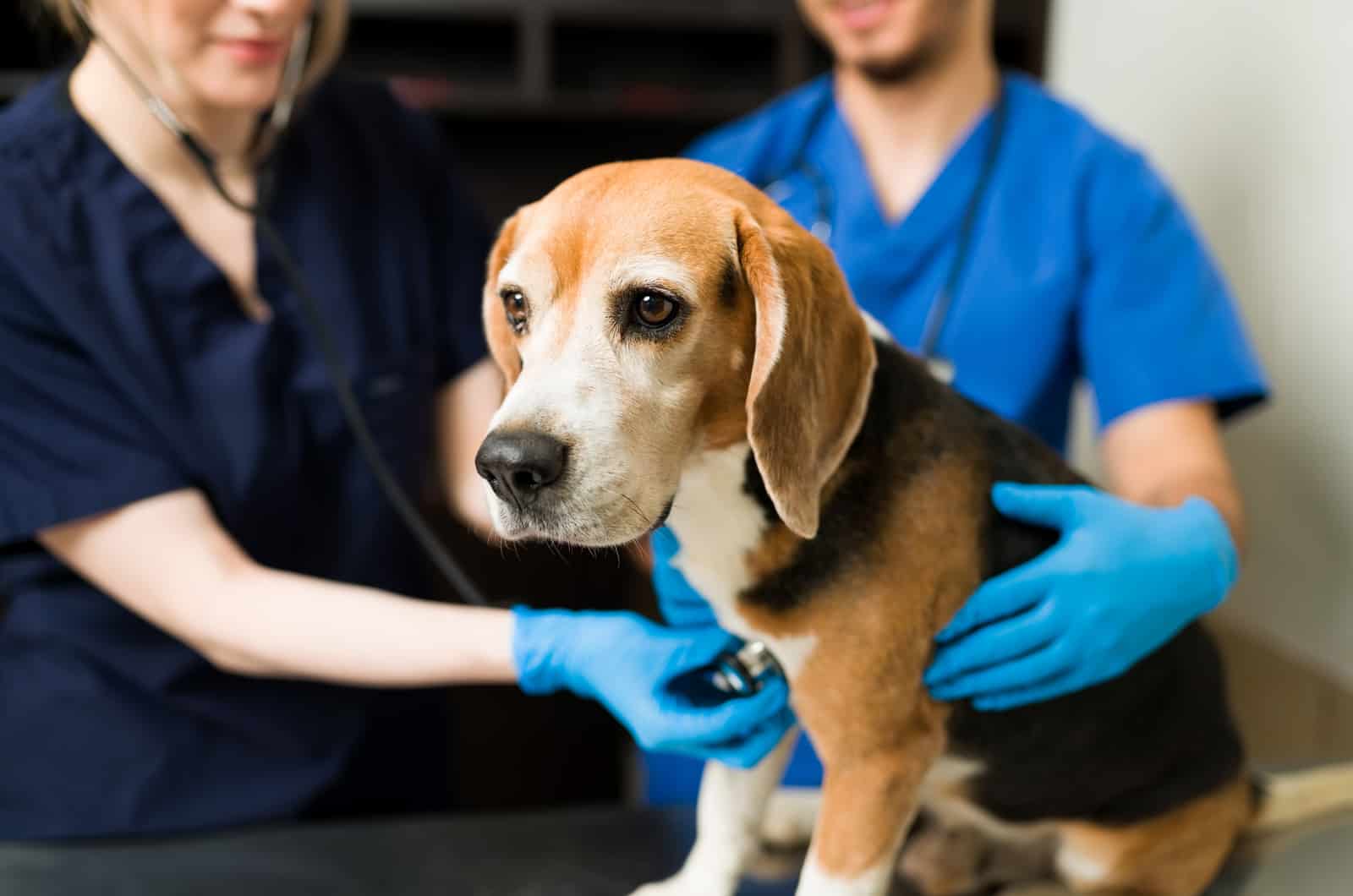
This is the key point for your dog’s survival. You need to take them to the vet as soon as you notice the first symptom. Pet owners are the ones that can give the dog a chance of survival.
A dog that is left untreated or not brought to the vet while showing symptoms has a 90% chance of passing. This sounds terrible, but there is good news.
Dogs that are treated and brought to the vet as soon as the pet owner notices the first symptom have a 90% chance of surviving and fully recovering from this virus.
As soon as the dog is diagnosed with parvovirus, the vet can start the treatment.
RELATED: Why Is My Dog Acting Weird All Of A Sudden: 17 Odd Dog Behaviors
Stage 5: Parvo Treatment
There is no specific cure for canine parvovirus. If the dog gets help early, the experienced vet will give your pooch things to help them get better. Some of the things that can be included in the proper treatment are:
– Anti-vomiting medicine
– Fluid therapy
– Antacids
– Antibiotics
– Vitamins
– Blood transfusions
– Plasma transfusion
The next step can depend both on you and the vet. Your dog might need to be hospitalized, but it can also be sent home for recovery. You need to be comfortable with needles and have a lot of time to spare so you can dedicate yourself fully to your dog.
If your dog has severe symptoms, bringing it home for care is never an option.
Stage 6: Recovery
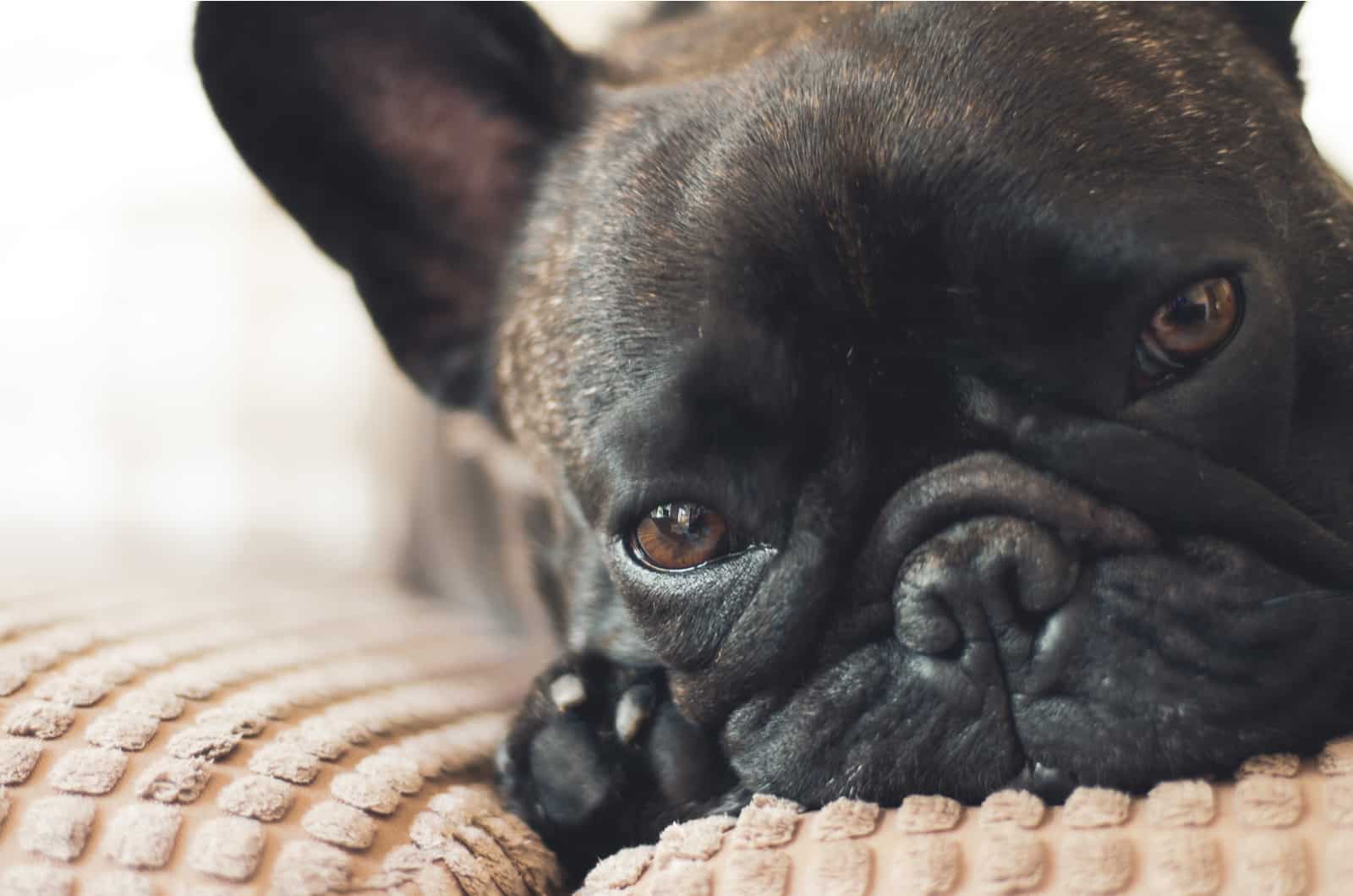
Your dog needs to be isolated because they can easily transmit the virus to other dogs. Dogs with severe cases will most likely be left in the hospital to recover and then get sent back home.
If you plan on taking care of your dog at home, you need to disinfect your home regularly. There are some disinfectants that do not kill the parvovirus, so you need to find the ones that work specifically in this situation.
Recovery usually takes 14 to 20 days, but this varies from dog to dog and the severity of the infection.
Stage 7: Full Recovery
All of the symptoms will gradually disappear and your dog will be able to carry on their life as normal. Your vet will probably do a re-test to be sure that your dog is parvo-free. After 15 to 30 days, the vet will take a stool sample which will 100% tell if the dog is all cleared up.
You need to know that a dog that had parvo will create an immunity to it for one year for sure, but you need to re-vaccinate your pooch every time the vet tells you to.
You should bathe your dog often for a month after it gets better because there could be some parvovirus left on their hair, which can still infect other dogs. You can take your dog out, but try to isolate them from other dogs just in case.
Dog parks should be avoided for some time to make sure you do not infect any other dog.
How To Diagnose Parvo
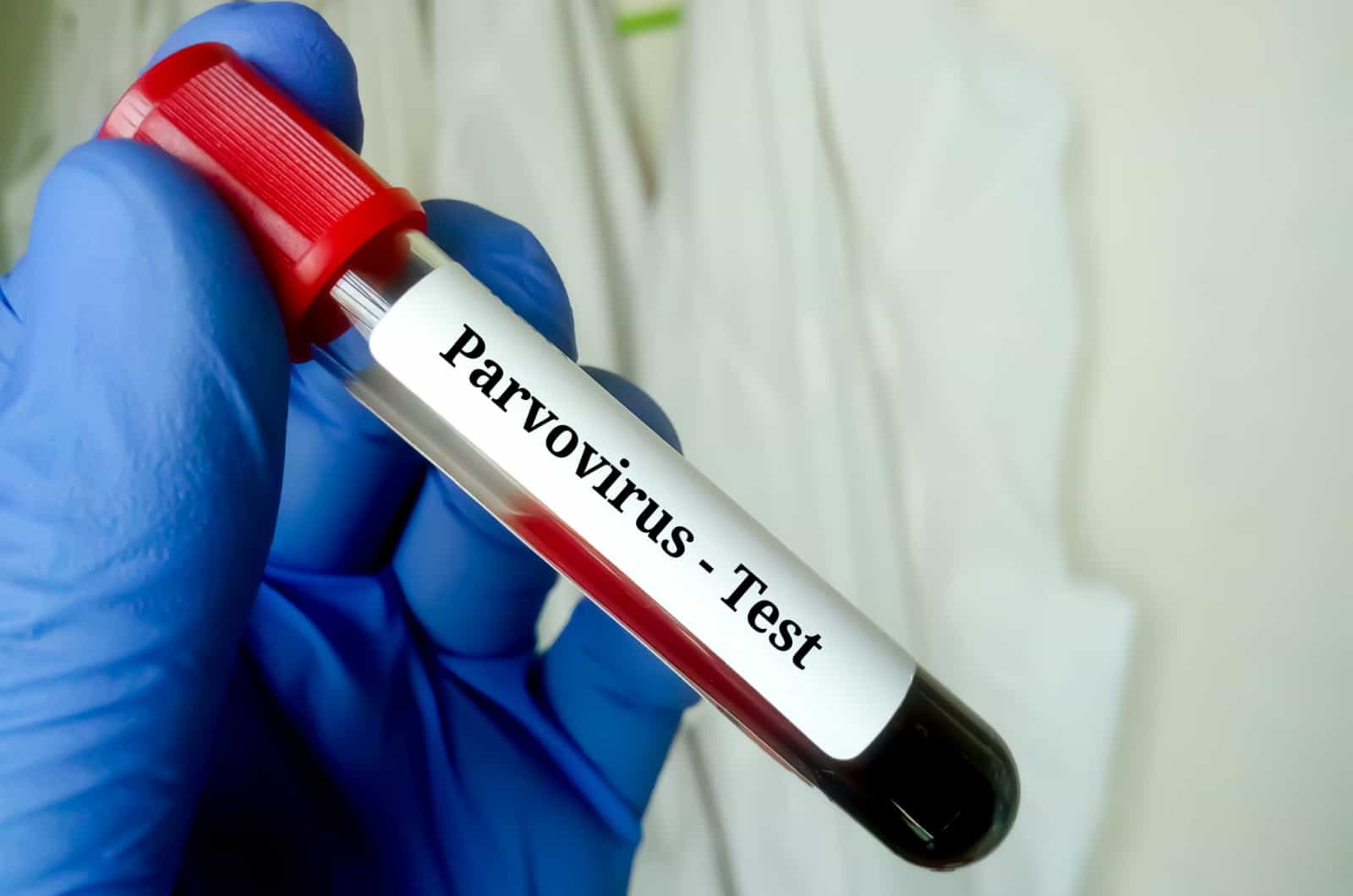
There are a couple of ways to determine if your dog has parvo or not. There is a thing called the ELISA test that you can do by yourself at home. You will need to test the feces of your dog. The results are usually shown within 15 minutes.
Sometimes this test can come out as a false negative. This is when the dog is too early in the incubation stage. If you have a suspicion that your dog might have parvovirus but the test came out negative, call the vet.
When the dog arrives at the vet, they might do a more detailed test called PCR. This test, just like any other, can come as false negative as well. At this point, the vet would need to determine if your dog might have parvo based on any symptoms they notice.
If they think that your dog is positive, they will do a test to see how many white blood cells your dog has. Since this virus attacks the bone marrow, the count of white blood cells will be low.
If your dog has any of the symptoms, like vomiting and a low count of blood cells, your vet will know that your dog has parvo and they will start the adequate treatment right away.
All these negative tests may be a good sign because it means that they are in the early stages, so there is a higher chance of your dog getting better.
How To Treat Parvo
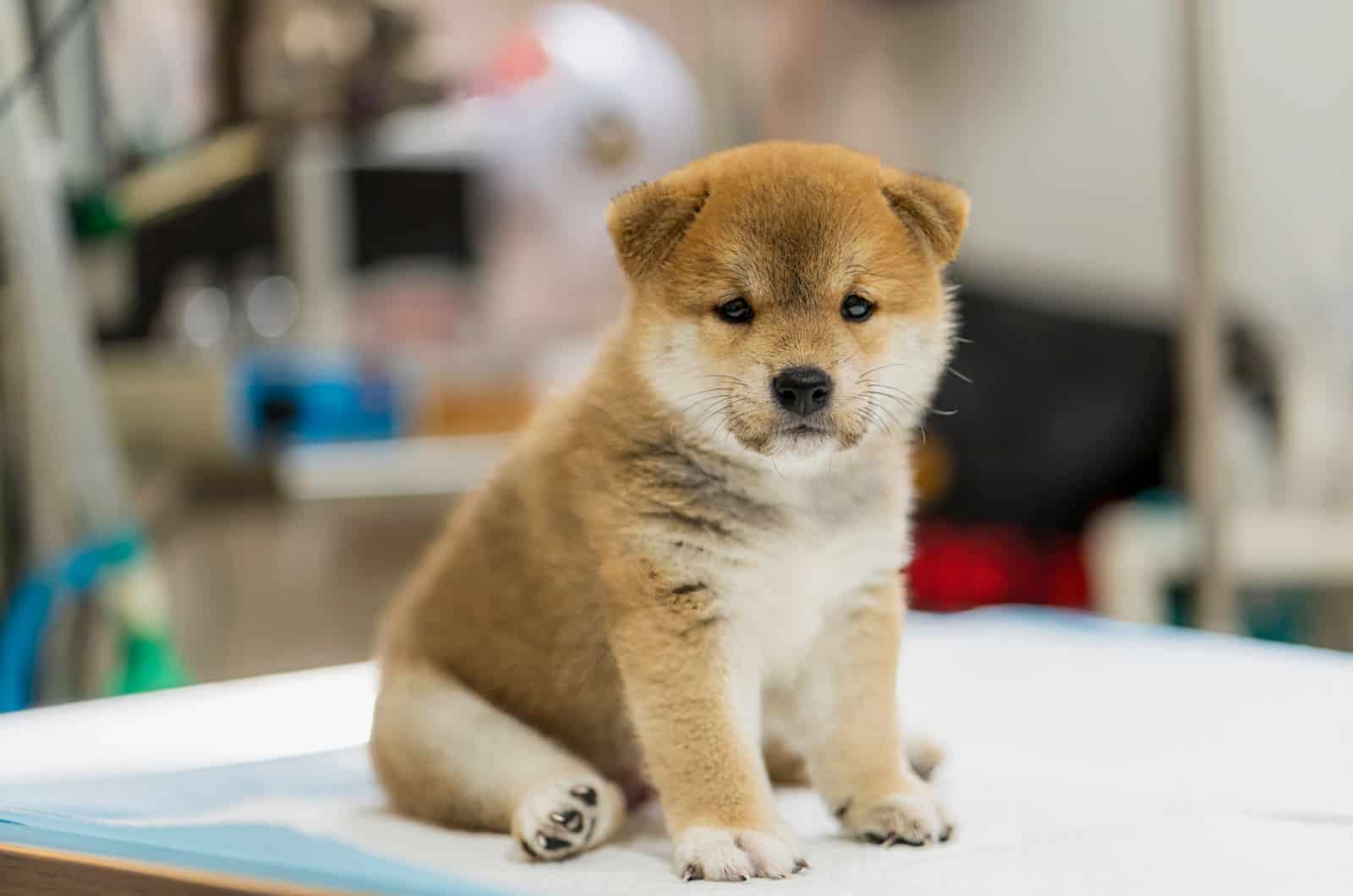
Since there is no specific medicine or general cure for this type of disease, it can be tricky to treat it. This also varies from dog to dog and how far the illness has progressed. Young puppies are hospitalized to ensure things are improving.
The puppy will receive IV fluid therapy and will be monitored for 24 hours. Puppies usually spend five to seven days in the hospital. Within that time, the doctor of veterinary medicine will know if the dog is getting better — or unfortunately, if there is no help.
Here is the list of everything that is probably going to be done to your puppy to try and save their life while they are in the hospital:
– Electrolytes, glucose levels, and white blood cell counts will be monitored regularly to see if the puppy’s condition is getting better, worse, or staying the same. This means that a lot of blood tests will be done.
– Your little puppy will have IV fluid put in their paw to get all the necessary fluids and nutrition to keep them strong. Intravenous fluids will be given to your puppy for 24 hours a day for all of the five or seven days that they are in the hospital.
– Dextrose, potassium, antibiotics, and anti-nausea and pain medications will be frequently given to your pooch. Of course, this depends on the blood test results and the general state of the puppy. Since sick puppies will not be able to take these medications orally, they will be given through the IV.
– Trained nursing staff will routinely check the puppy’s heart rate, gum color, and if the puppy is dehydrated or not. Blood pressure needs to be monitored regularly as well.
– If your puppy starts getting weaker, it will be given colloids. This is used so your puppy gets extra nutrients not just by IV.
– The nursing staff will make sure that the puppy is kept clean and comfortable. Since these puppies will most likely have diarrhea and be vomiting, the space where they are kept needs to be clean.
– Every few hours, an abdominal palpation will be done. This way staff can be sure that the puppy has not developed an intestinal intussusception.
– If the puppy’s condition gets critical, they might need a feeding tube.
After everything is done within these five to seven days, the vet will tell you the puppy’s general state. If your puppy is doing well, you can usually take them home on the seventh day and start home treatments.
You will be given all the instructions to care for your pooch, so don’t worry. If you ever feel overwhelmed or a bit lost, you can call your vet or even take your dog for a couple more days of hospitalization. It will be draining, but we are sure that you will gather all your strength to help your small puppy get better.
Home Treatment For Parvo
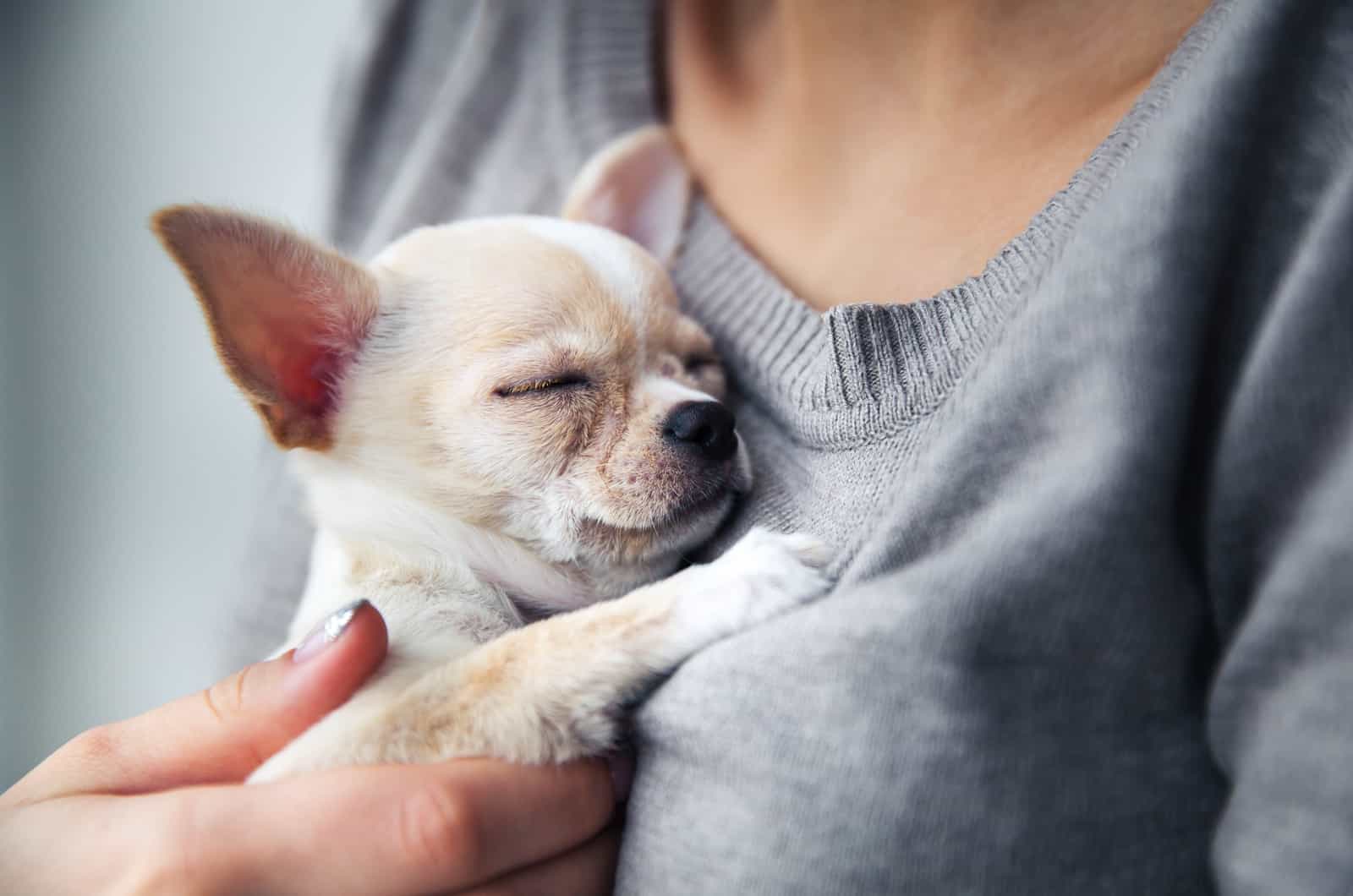
To be honest, there is no right and specific home treatment for canine parvovirus. It is said that the mortality rate is higher when talking about dogs that have been treated only at home without any hospitalization.
Home treatment should not be frowned upon. After hospitalization time, the vet will most likely tell you to bring the dog home. The problem is when, for various reasons, people don’t take the dog to the vet at all but only consult by phone.
Here are some outpatient treatments for canine parvovirus:
– A highly digestible diet
– Antiemetics to stop the vomiting
– Subcutaneous fluids for hydration
– Antidiarrheals
There are a couple of things that you can do when it comes to home treatment, and we will list them and explain them a bit. We want to make a disclaimer that for everything we list, you need to check with your vet first and not do it by yourself. You can also find more useful information in our article on how to cure parvo without a vet.
Give Pepto-Bismol
This remedy is good for keeping your dog’s stomach coated. Parvovirus causes inflammation of the lining of the intestines, which is pretty extreme. This causes a dog to bleed which can result in death.
The bleeding causes the parvo odor, which is akin to blood. By giving your pooch a half a spoon of Pepto-Bismol every two hours, it will ease the inflammation. The intestines will be coated, and bleeding will be prevented.
Offer Them Ice Cubes
This is a good method of keeping your dog hydrated. Licking ice cubes can help your dog by easing the belly pain. It can also calm them down a bit.
Even dogs or puppies that are in a really bad state tend to enjoy ice cubes. Try to do this every two or three hours to keep them hydrated. All the other benefits are a plus.
Give Your Dog Pedialyte or a Homemade Substitute
Getting electrolytes and fluids in the dog’s system is very important. The big thing that can kill your dog if they get parvo is dehydration. You can offer this remedy to your dog with a syringe or a teaspoon.
If neither of these work, try to find a way that your dog will accept it. Since they will not drink by themselves, you will need to be the one that makes sure that they get enough fluid.
When it comes to the dosage, it truly depends on the size of the dog. When talking about dogs that are medium-sized, you will need to try giving them two or three tablespoons every half an hour. If the dog is bigger, you can give them more, and if a dog is smaller, fewer tablespoons will be needed.
The appropriate thing to do is ask the vet what would be the best dosage for your pup.
Your dog may throw up, but don’t worry; some of the Pedialyte will stay in their body. If they end up vomiting, try to offer them a tablespoon or two roughly 20 minutes after they have thrown up.
Give Your Dog Reglan Pills
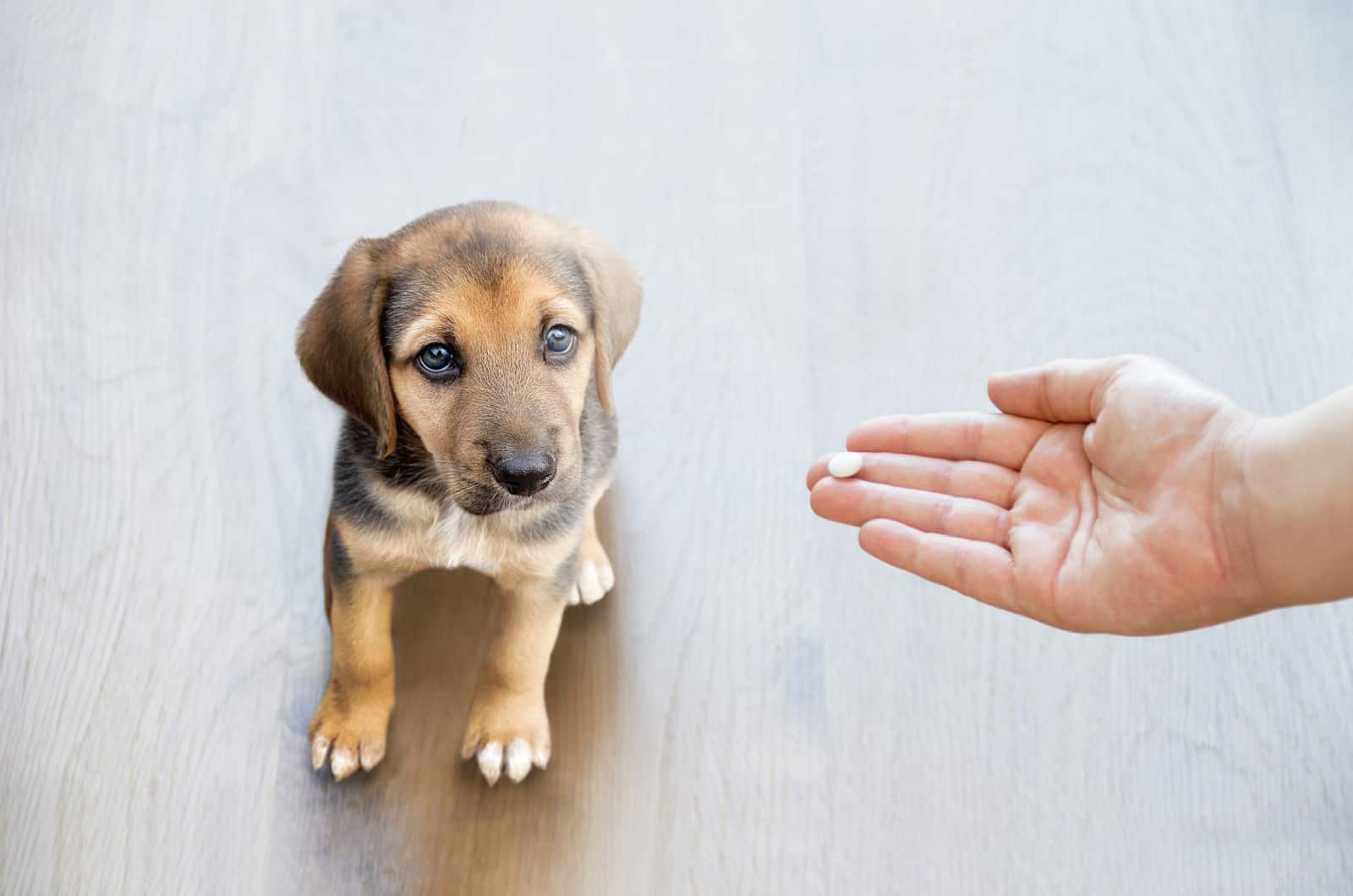
These pills will help your dog get some rest by calming their vomiting, diarrhea, and belly ache.
The fluids will absorb better, which will help your dog stay hydrated. These pills should never be given to a dog if you do not know the right dosage. Before giving them, you need to contact your vet and ask for the right amount of pills that your pooch can get on a daily basis.
Keep Your Dog Clean
Since your dog will have a lot of accidents, it is crucial that you keep the dog and the environment clean. This way you are purging the virus from your home and making a comfy environment for your dog.
This will take a lot of your time in the beginning stages, but it will all be worth it in the end when your pooch gets better.
Wipe Your Dog With A Warm Cloth
Wiping your dog with a damp and warm cloth will help them relax and get some rest. This will also keep them clean. If you see that your dog has a problem with stomach pain, you can leave the warm cloth on their bellies.
This can ease the pain a bit. It does not necessarily need to be a cloth. You can use anything that can get warm. People usually find something like a rubber bottle that they can fill up with warm water. You can find many similar things on Amazon.
Vaccination
This is more connected to other dogs that you may have or are planning on bringing home. If you need to bring home a new dog but your other dog has parvo at the moment, you should not let the new dog home until it gets the parvo vaccination.
This way you can be sure that the contamination will not be spread and that your new puppy will be safe. After your sick dog gets healthy, you should advise with your vet if your dog should get the vaccination immediately or wait for some time since they will naturally develop antibodies.
Be Present
Every puppy or dog that is in distress, whether they are sick or scared, likes to feel safe and at ease by having their owners around them.
Offer them a lot of cuddles and love. Try to always be there so they can keep an eye on you too. This is also important for monitoring. You are not just giving them love, but you can also notice if their state is getting better or worse.
They will like for you to sleep with them, but don’t get confused if they face their bum towards you. This is a sign that they are comfortable and that they trust you.
Offer Them Food And Water
Your pooch will have no strength to get up and eat or drink by themself. Not only will they have no energy, but they will also vomit a lot. This is the tricky part, but try to be persistent and gentle. Even the smallest amount of food and water is amazing in the beginning stages.
You can offer them some chicken broth, for example, which will keep them hydrated and give them all the good nutrients that they need to get better.
After a while, they will gain strength thanks to your help and will be able to eat and drink by themselves.
You will need to do a lot of testing to see what food suits your dog best and makes them vomit the least.
RELATED: What To Feed A Sick Dog With No Appetite: We Are Here To Help You
What Is The Survival Rate Of Parvo?
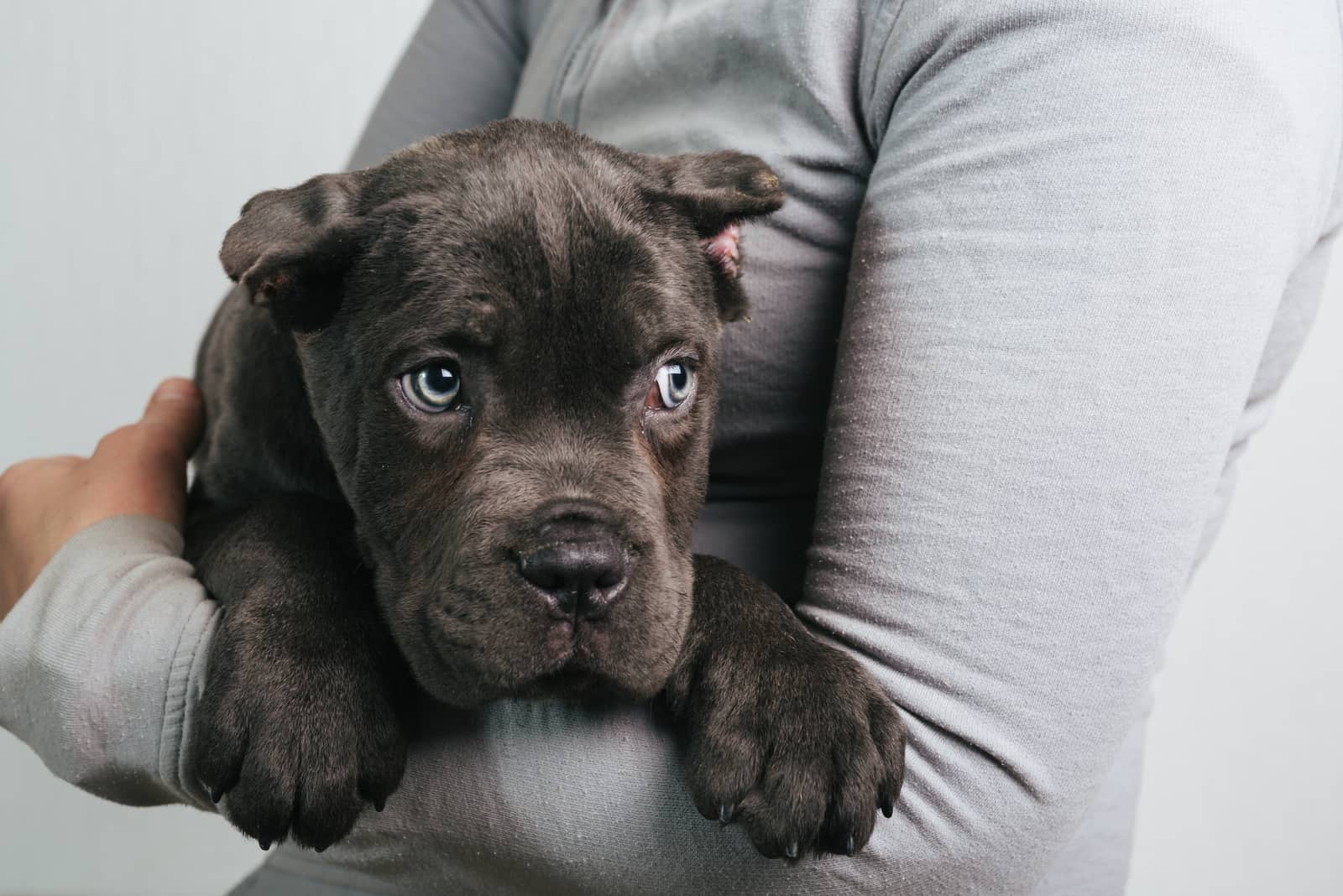
Since the vaccination has been produced and since some treatments have been improved, the rate of survival is larger than it used to be. When the parvovirus first appeared, the survival rate was 0%.
Today, this rate has increased to 70 to 80%. Some might say that this rate can go up to 90% if you include the vet treatment and vaccination, but this can be misleading. This disease is still very serious and deadly, and there needs to be a lot of effort put into keeping your dog alive.
Getting parvo is considered one of the most difficult things for a dog to go through. Not only is it difficult, but the treatment is quite expensive.
All the treatment and hospitalization can cost you anywhere from $1,500 to $4,000.
What we want to emphasize is that the best way to prevent your dog from getting parvo is vaccination, and you should not skip it. This type of vaccination is not one that you give to your dog once and then they are safe for their lifetime.
You will need to listen to your vet’s instructions and bring your dog in when an appointment is made.
How To Prevent Parvo Virus From Affecting Your Dog
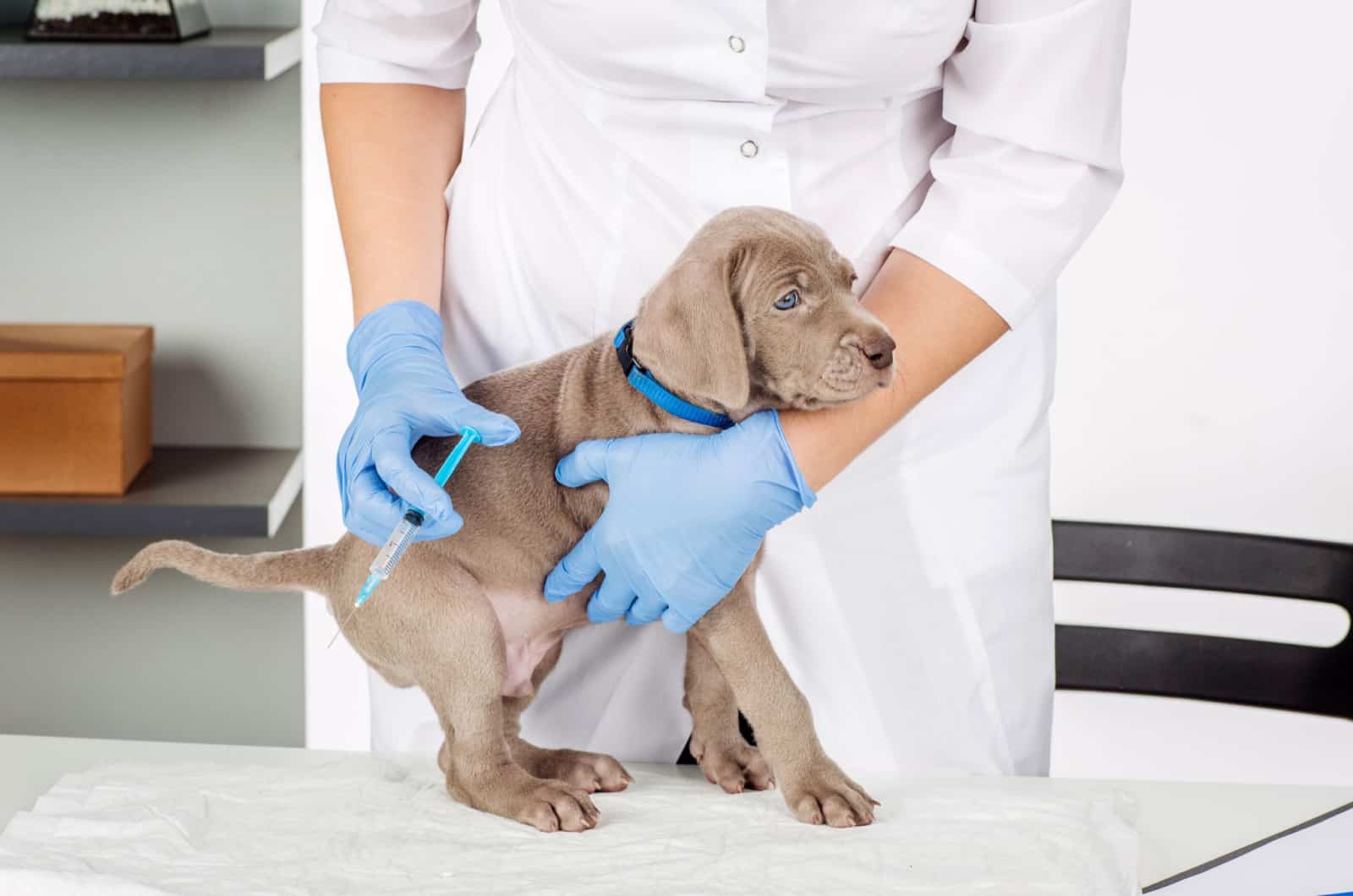
The best thing that we have mentioned a couple of times already that can prevent your dog from getting the parvovirus is vaccination. This way you are building their immune system and giving your dog antibodies that will help them fight off this disease.
There are other things that you need to keep an eye on, especially in the period when your dog is still not able to be fully vaccinated.
You should avoid places like dog parks where there are a lot of dogs. When you are surrounded with a lot of dogs, there is no way of knowing which dog is vaccinated and which dog may potentially be carrying the virus on them.
You can bring your dog to some reputable training centers or places where the workers take good care of the dogs and check if the dogs have been vaccinated.
Getting your puppy from a reputable breeder is important. There are breeders that do not care about the dogs but only about profit. You can be sure that these types of breeders do not do anything to benefit the health of the puppies.
Many puppies that come from puppy mills or bad breeders suffer from parvovirus and many other potential diseases.
Bad breeders can also take the puppy off the mother’s milk too soon. Puppies that have been on mother’s milk for 45 days or longer have a better immune system and have a higher chance of surviving this type of virus.
You need to know that places where you can adopt dogs can also have a problem with parvovirus, but this is not that common. A lot of people that work in these types of places love dogs and take good care of them.
They clean the kennels regularly; but just in case, always ask if there has been a parvo outburst recently.
Can Humans And Cats Be Contaminated?
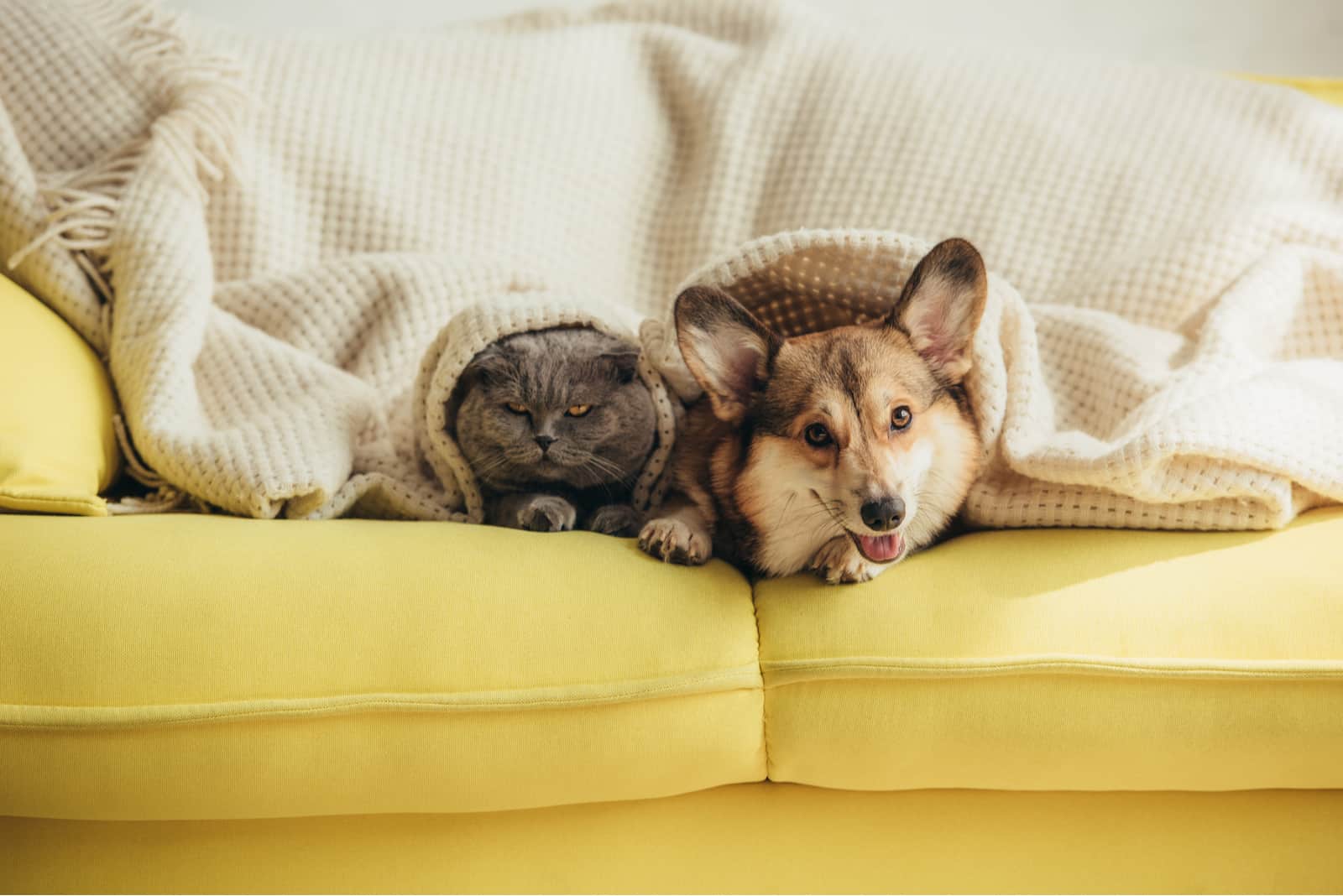
Every animal — including us humans — has different types of parvovirus. This means that a person cannot infect a dog, and a dog cannot infect a human. This is good news for sure, but don’t get too comfortable.
You should still wear protective gear and clean any clothes and environment that has been in contact with an infected dog. People tend to use bleach sometimes for disinfection, but there are remedies that are specially made to kill the virus.
If you are not careful, you can spread the virus to other dogs unknowingly. You can potentially make a chain infection to many other dogs by just petting them.
Cats also have their version of the parvovirus and cannot be infected by a dog, and a cat cannot transmit the virus to a dog.
RELATED: Why Do Dogs Eat Cat Poop: 6 Reasons And How To Stop It
How Do I Know If My Puppy Will Survive Parvo? Some Of The Signs
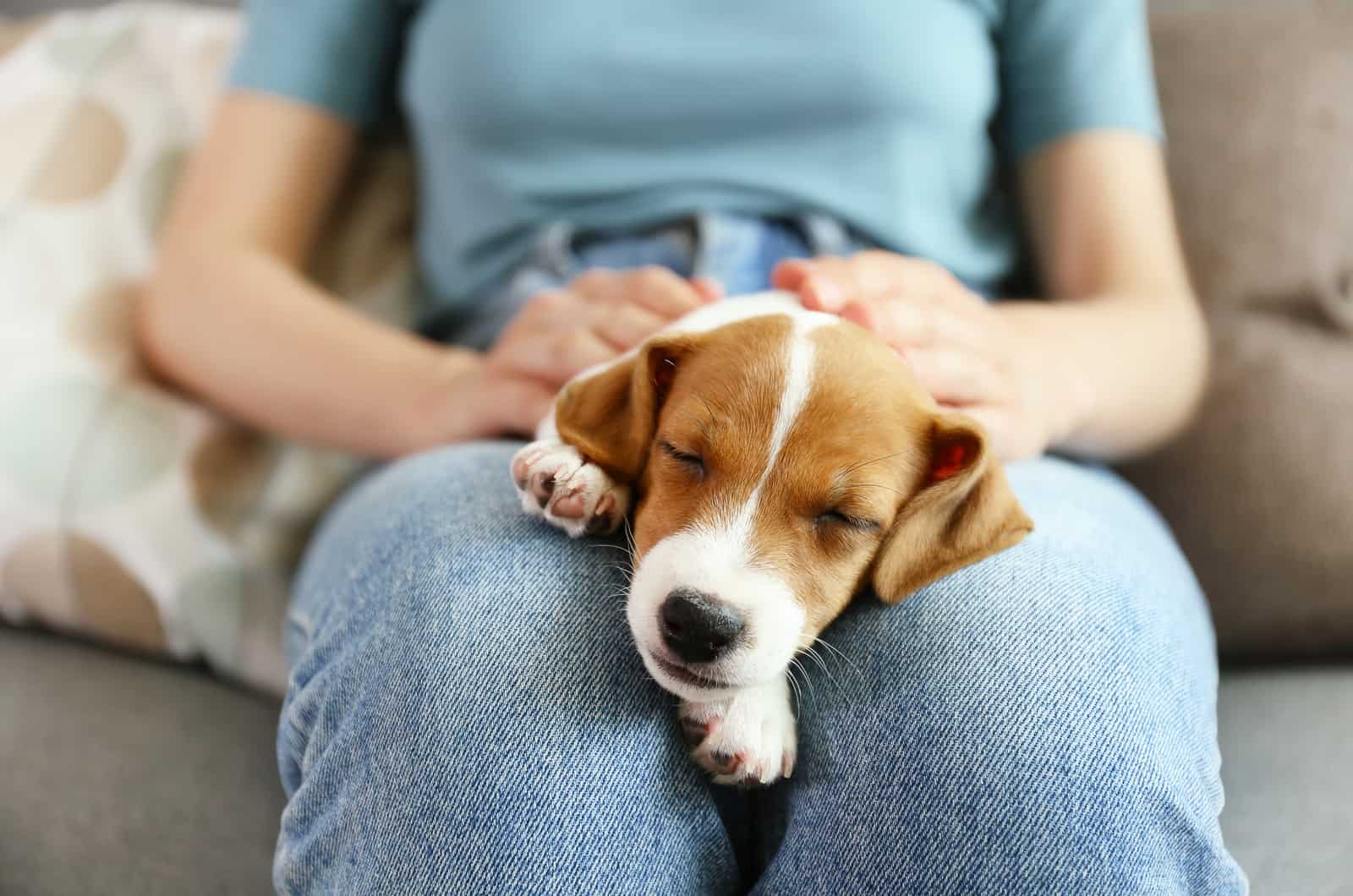
We have already seen some of the severe symptoms that this disease can cause. Some are more difficult on the dog while others might be a little less scary.
There are some good signs that you will for sure be able to notice that are showing you that your pooch is getting better. Some of those signs are:
Your Dog Stops Vomiting
Vomiting is one of the main symptoms of parvo, and it is caused by bleeding in the small intestines. Your dog will probably vomit a lot, and the color of the vomit can be clear, yellow, or even bloody.
RELATED: Why Is My Dog Throwing Up Yellow & How To Treat It
A lot of foam will also appear around the dog’s mouth. They might even vomit the white foam. When you see that your dog is slowly getting better is when the vomiting decreases and eventually stops.
This means that the infection and the injury to the small intestines and belly are getting better. The medication and all of your work paid off!!
Your Dog Stops Having Bloody Diarrhea
Bloody diarrhea is also one of the main symptoms of parvo. This is something that is very uncomfortable for the dog and can be very painful because this means that the small intestines are bleeding.
This symptom is very noticeable and scares a lot of dog owners, which is understandable. This is a common occurrence, and you will need to spend a lot of time cleaning and soothing your dog. It will also have a strong and bad odor.
One of the first good signs is that the blood from the diarrhea has disappeared. The next good sign is that the stool becomes harder and eventually becomes normal.
This is one of the main signs that your dog is getting better. Even when the stool gets normal, still keep up the special diet for some time to make sure that their insides are fully recovered.
RELATED: How To Clean Diarrhea Out Of Carpet? No Mess In A Few Steps
Your Dog Will Have More Energy
Lethargy is the first sign of parvovirus, and it can be mistaken as a sign of some other illness. Lethargy is especially noticeable when you see your dog refusing to go for a walk and even refusing to take treats.
This means that some of the pain and discomfort is starting. Dog owners that have dogs that are high in energy will notice this symptom almost straight away. People that have dogs that are low in energy may have a bit more difficulty noticing lethargy.
A dog with parvo will just lie around and refuse to move. They will look depressed, which is also one of the symptoms.
When you see your dog all of a sudden willingly standing up and walking around the house again, it is such a relief. Over time, they will look happier and will even start to call you to take them out.
Depending on the stage of recovery, you may be able to take a small hike around the neighborhood to allow your dog to stretch their legs a bit. If you want to take your dog out, you will need the vet’s thumbs up; before that, you should keep your dog inside.
Your Dog Will Start To Eat And Drink
This has a lot to do with them no longer vomiting and having diarrhea. Their intestines are healed, and there is no pain that is preventing them from eating anymore. You will see your dog begging you for food while you are eating.
Even though this is a very happy occurrence, you should not give your dog anything that is not their special diet for a while. Everything needs to be healed properly, and you don’t want to damage their bellies again by giving them human food that might be either spicy or too hard on their stomachs.
They will also start asking for water. They will probably drink a lot of water as they get better because they did not drink it while they were sick and in a bad condition. This is also great news, and you should give them plenty of water.
It will do them no harm to drink a lot of water, but be prepared — they will need to pee a lot.
Can A Dog Get Parvovirus Twice?
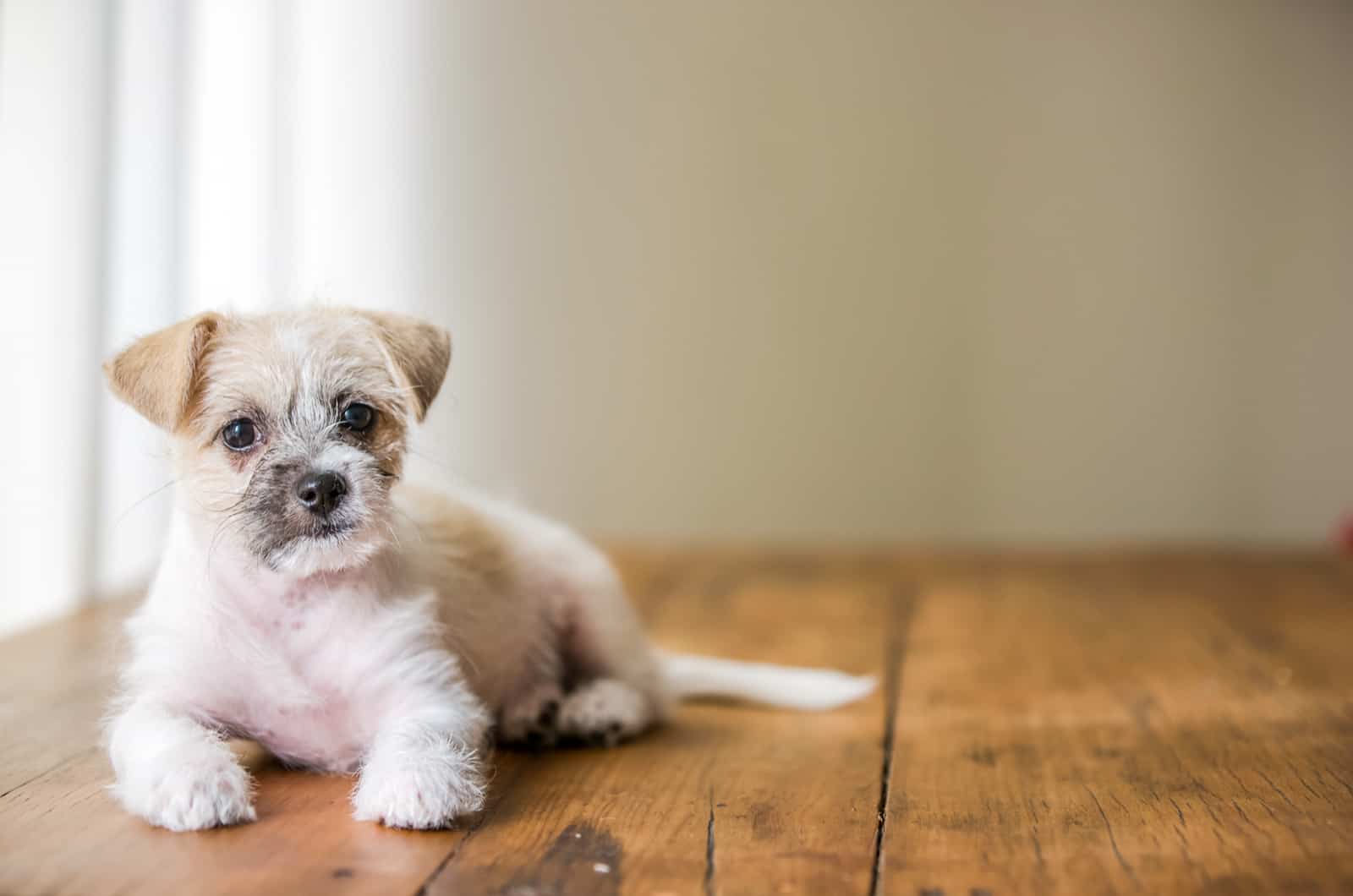
This is not impossible, but the chances are slim. When a dog recovers from this disease, the body will produce antibodies that will protect them from it. This protection can last for a year or even a couple of years.
But keep in mind that this does not mean that you should not give your dog all the necessary vaccines. A dog that had parvo and had the natural antibodies but is not vaccinated properly can still get it at some point.
Even when you know that you have given your dog all the vaccines and that they already had it, you should not deliberately let your dog hang out with a dog that is infected. This is just to be extra safe.
How Long Does Canine Parvovirus Last?
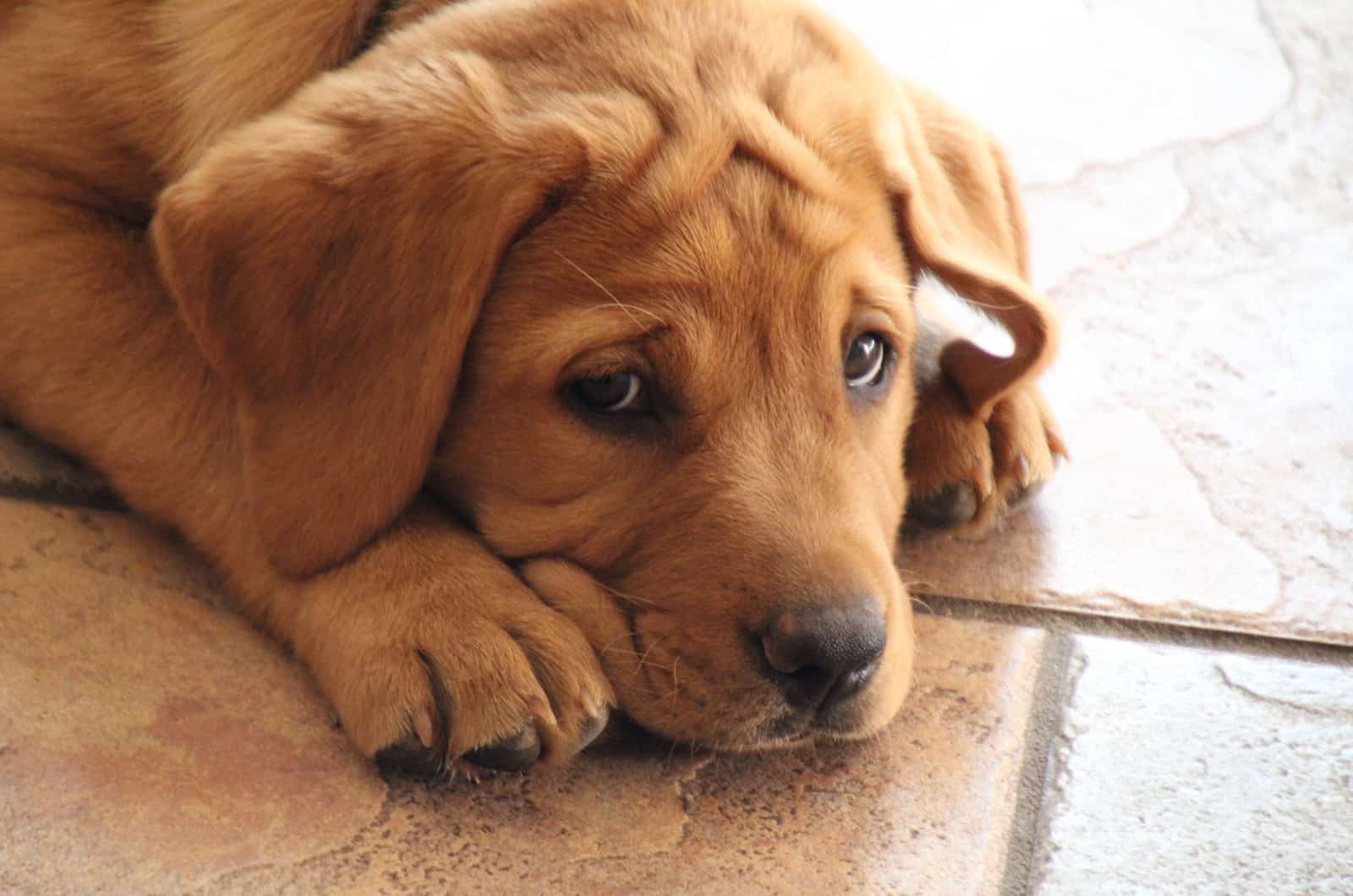
This can vary from dog to dog, but in most cases, dogs will be hospitalized for five to seven days. The most crucial time when dogs usually die is within the first 24 to 72 hours. When they survive that period, there is an 85% chance that the dog will make it.
The hospitalization period lasts for that long just to be sure that the pooch is getting better. After that, homecare will begin. This usually lasts for about 20 days.
After that 20 days, the vet will re-test your dog to be sure that they are negative. Even when they show a negative result, you will need to keep your doggy away from other dogs in case there is still some virus left on their coat.
Generally, this might sound like a long time, but the first five to seven days will be the most intense, and when you see your pooch getting better, the 20 days will fly by.
Can A Vaccinated Dog Get Parvovirus?
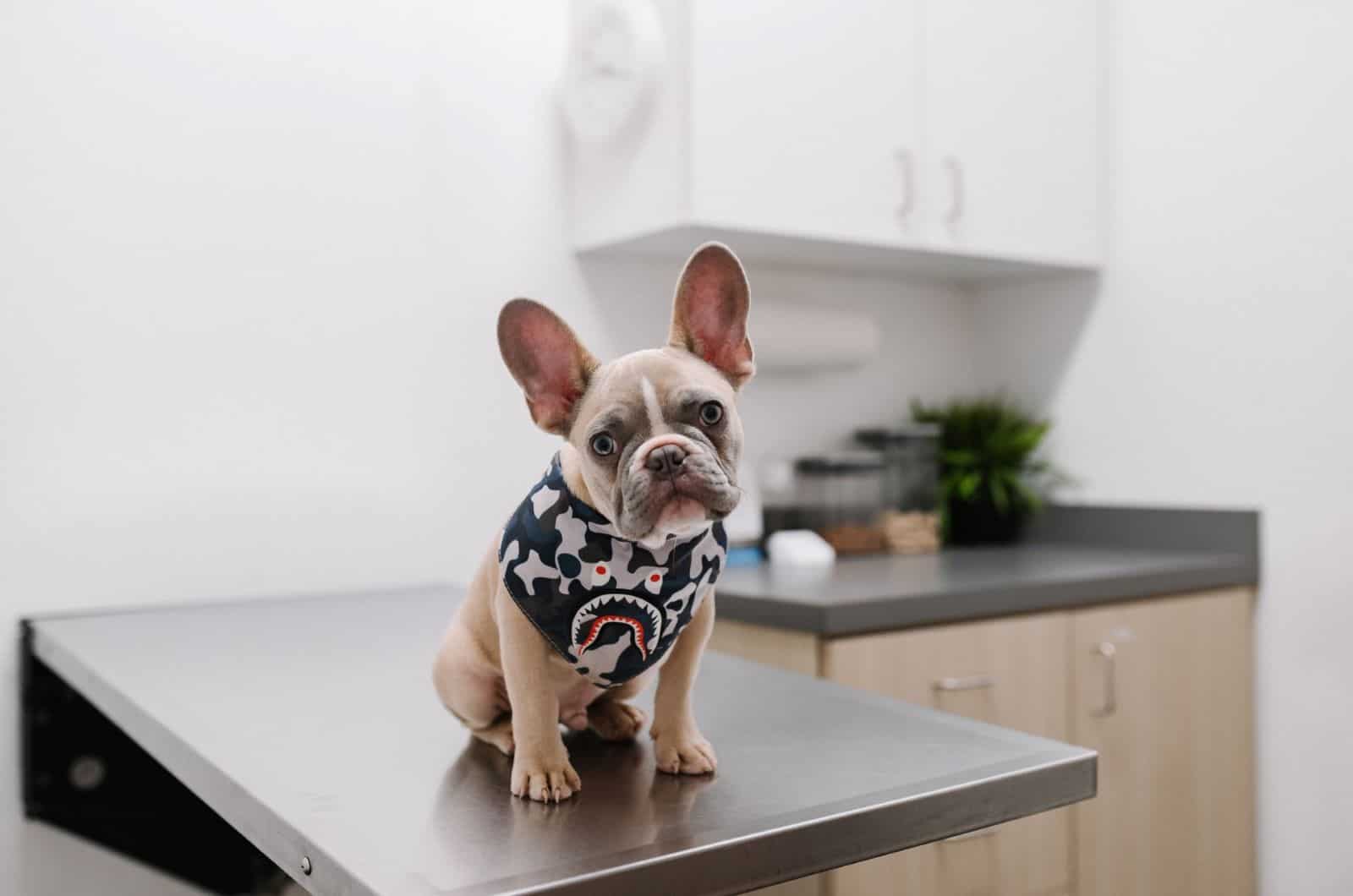
When talking about vaccinations, there is no way to be 100% sure that the vaccine will protect your dog. But according to studies, this vaccine is really effective. It is really unlikely that a dog that is properly vaccinated will get infected.
This of course depends if you have given all the boosters and vaccines on time, especially when they are puppies, and if you continue with the vaccines as they get older.
If you have done and fulfilled everything that your vet has suggested, you don’t have to worry that your vaccinated dog will get parvo.
To Sum It Up
Parvovirus is one of the most serious and deadly illnesses that your puppy can get infected with. It is super easy to get your dog vaccinated.
The alternative could be them contracting the virus and going through recovery, which is very intense, scary, time-consuming, and expensive.
When talking about this illness, the question of “How do I know if my puppy will survive parvo?” comes up. This is completely normal. To know this, you need to understand all the symptoms, treatments, and options of how to treat your dog.
There is no certainty with this type of disease, so there is not one answer to your question. The first day or two are the most crucial, and sometimes there is nothing you can do but wait and hope for the best.
We showed some good signs that show us that our fluffy friend is getting better, but that is something that you will notice for sure by yourself.
We hope that this little guide on parvovirus has served its informational purpose. It may help you detect the symptoms in your dog, but whenever you see your pet acting differently (and if it is struggling in any type of way), call the vet immediately.
They are the only ones that can truly help both you and your dog.
